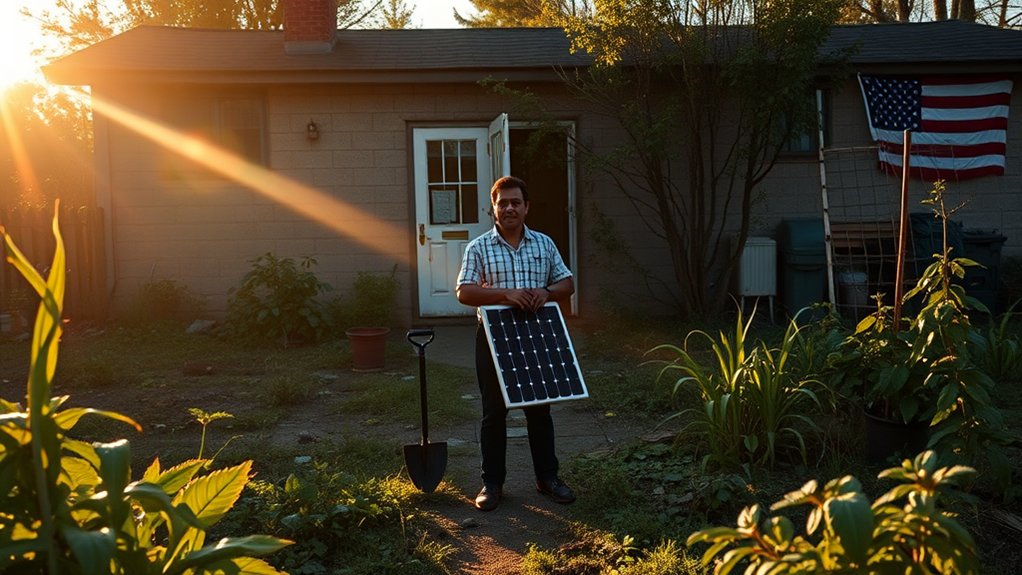Key Takeaways:
- Over 60% of Americans have less than $1,000 in savings.
- Taking control of your financial destiny is crucial.
- Economic resilience can empower your community.
Building a Strong Financial Future
Did you know that over 60% of Americans have less than $1,000 in savings? It's time to flip the script and take charge of your financial destiny. Don't wait for the government to swoop in with solutions.
Instead, set your financial goals, craft a budget, and build that essential emergency fund. Ready to tackle debt and plan for your future?
Let's explore how you can fortify your financial foundation and empower your community through economic resilience.
Setting and Achieving Financial Goals
When it comes to setting and achieving your financial goals, it's all about clarity and commitment. Define your financial milestones by setting clear, specific objectives. This isn't just about dreaming big—it's about making those dreams tangible. Establish measurable outcomes to track your progress, because what gets measured, gets managed. Are your goals achievable? Take a good look at your current financial situation and confirm they're realistic. Remember, relevance matters; align your goals with your long-term financial health. Set deadlines to keep the momentum going. Regular goal tracking will keep you on course, allowing for timely adjustments. Financial goals can be categorized into short-term, mid-term, and long-term goals, each requiring a different approach and timeframe for achievement.
Building a Budget and Emergency Fund
Accepting financial clarity is just the beginning; now, let's get strategic about your budget and emergency fund. By using smart budgeting strategies, you can lay a strong foundation for financial security.
Start by identifying non-negotiable expenses like housing and utilities, ensuring these are covered first. Next, implement savings techniques like automatic transfers to build your emergency fund. Aim for a three to six-month cushion to shield against unexpected setbacks.
Remember, a high-yield savings account is a great way to grow your fund while keeping it accessible. Discipline is key—keep this fund separate from everyday spending to avoid temptation.
Your financial resilience is within reach, empowering you and your community to thrive against any financial shocks.
Tackling Debt and Planning for Retirement
Facing debt head-on and planning for retirement are essential steps in securing your financial future and, by extension, the prosperity of your community.
Start with debt reduction strategies by prioritizing fiscal consolidation during favorable economic times. It's important to design effective plans and, if needed, consider debt restructuring.
For retirement savings, focus on building a solid foundation. Here's how:
- Maximize Contributions: Increase your 401(k) and IRA contributions to boost your savings.
- Health Savings Account (HSA): Open an HSA to cover future healthcare costs.
- Diversified Portfolio: Align your investments with your risk tolerance for growth and stability.
Conclusion
Charting Your Own Financial Course
So, you're considering the government as your financial superhero? Here's the truth: it's not. Instead, envision yourself as the captain of your financial ship. Set your sights on clear goals and craft a budget that sings like a well-composed jazz piece. Build an emergency fund that rivals your grandma's legendary stash of sweet potato pie. Tackle debt with the precision of a pro linebacker, and plan for retirement with the wisdom of an old-school griot. Remember, financial independence is your powerful legacy to the community.
Now, take action: Set those goals, start budgeting, and begin saving today. Your financial future is in your hands.











